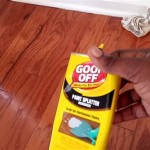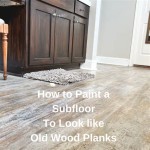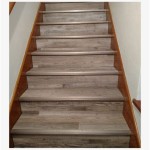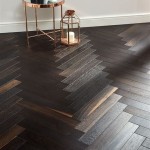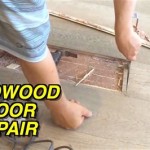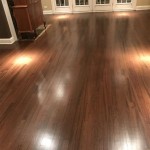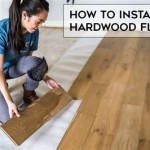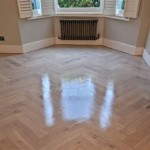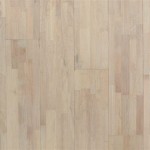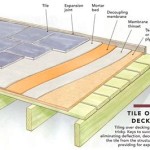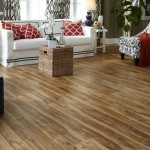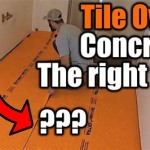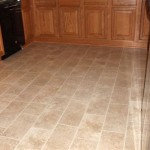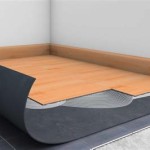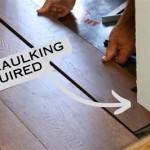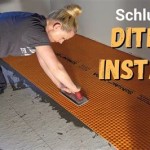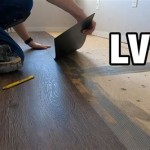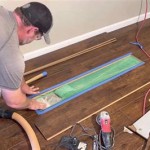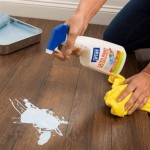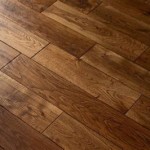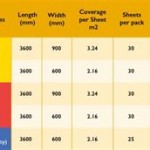How To Remove Tape Glue From Wood Floors
Adhesive residue left behind by tape can be a persistent nuisance, particularly on wood floors. The sticky substance attracts dirt and debris, creating an unsightly and potentially damaging layer. Removing this residue requires a careful approach, utilizing appropriate techniques and materials to avoid harming the wood's finish or structure. This article provides a detailed guide to effectively removing tape glue from wood floors while preserving their integrity.
The success of any removal method hinges on understanding the type of tape used and the type of finish on the wood floor. Different adhesives respond differently to various solvents and techniques. Furthermore, some wood finishes are more susceptible to damage than others, demanding a gentler approach. Before attempting any of the methods described below, testing a small, inconspicuous area is crucial to ensure the chosen method does not discolor, dull, or otherwise harm the floor's finish.
Identifying the Type of Tape and Finish
The first step in removing tape glue is to identify the type of tape that left the residue. Masking tape, duct tape, packing tape, and painter's tape all employ different adhesives with varying strengths and compositions. Masking tape and painter's tape generally use weaker adhesives that are easier to remove, while duct tape and packing tape often leave behind more stubborn and persistent residue.
Simultaneously, identifying the type of wood floor finish is essential. Common finishes include polyurethane, varnish, lacquer, shellac, and wax. Polyurethane is a durable, water-resistant finish that can withstand more aggressive cleaning methods. Varnish provides a similar level of protection. Lacquer and shellac are more delicate and require gentler solvents. Wax finishes are particularly susceptible to damage from heat and solvents, necessitating the utmost caution.
Understanding these two factors—the type of tape and the type of finish—will guide the selection of the appropriate removal method and minimize the risk of damage. If uncertainty exists regarding the finish type, consulting with a flooring professional is advisable.
Gentle Removal Methods for Delicate Finishes
For floors with delicate finishes such as lacquer, shellac, or wax, the primary objective is to remove the tape glue without causing any discoloration or damage to the existing protective layer. The following methods prioritize gentleness and minimal disruption.
Warm Water and Dish Soap: This is often the first and safest approach to try. Mix a small amount of mild dish soap with warm water. Dampen a soft cloth with the solution and gently rub the affected area. Avoid saturating the wood, as excessive moisture can damage the floor. Continue rubbing until the glue begins to soften and lift. Once the glue has loosened, wipe the area with a clean, damp cloth to remove any remaining soap residue. Dry the area thoroughly with a clean, dry cloth. This method works best on fresh adhesive residue and may require multiple applications.
Baking Soda Paste: Baking soda possesses mild abrasive properties that can help lift adhesive residue without harsh chemicals. Mix baking soda with a small amount of water to form a thick paste. Apply the paste to the affected area and let it sit for a few minutes. Gently rub the paste in a circular motion with a soft cloth. Wipe away the paste with a clean, damp cloth and dry the area thoroughly. Test the paste in an inconspicuous area first to ensure it does not scratch the finish.
Oil-Based Lubricants: Oils like mineral oil, baby oil, or even cooking oil can help break down the adhesive bond. Apply a small amount of oil to the glue residue and let it sit for several minutes to allow the oil to penetrate. Gently rub the area with a soft cloth. The oil will lubricate the surface and help lift the glue. Wipe away the oil with a clean cloth and follow up with a mild soap and water solution to remove any remaining oil residue. Dry the area thoroughly. This method is particularly effective on residues from pressure-sensitive adhesives.
Hair Dryer (Low Heat): Gentle heat can soften adhesive, making it easier to remove. Set a hair dryer to its lowest heat setting and direct it at the affected area for a short period. Keep the hair dryer moving to prevent overheating the wood. Once the glue has softened, try to lift it with a soft cloth or plastic scraper. Be extremely cautious not to overheat the wood, as this can damage the finish. This method is most effective when combined with other methods, such as warm water or oil.
Stronger Removal Methods for Durable Finishes
For floors with durable finishes like polyurethane or varnish, slightly more aggressive methods can be employed to remove stubborn tape glue. However, even with these finishes, testing in an inconspicuous area remains paramount to prevent unintended damage.
Isopropyl Alcohol (Rubbing Alcohol): Isopropyl alcohol is a solvent that can effectively dissolve many types of adhesive. Dampen a clean cloth with isopropyl alcohol and gently rub the affected area. Avoid pouring alcohol directly onto the floor, as excessive amounts can penetrate the finish and damage the wood. Allow the alcohol to sit for a few minutes to dissolve the glue, then wipe away the residue with a clean cloth. Immediately follow up with a damp cloth to remove any remaining alcohol and dry the area thoroughly. Use caution, as prolonged exposure to alcohol can dull some finishes.
Goo Gone or Adhesive Remover: Commercial adhesive removers like Goo Gone are specifically designed to dissolve adhesive residue. Follow the manufacturer's instructions carefully, as some removers can be harsh and damage certain finishes. Apply a small amount of the remover to a clean cloth and gently rub the affected area. Allow the remover to sit for the recommended time, then wipe away the residue with a clean cloth. Thoroughly clean the area with a damp cloth and dry it completely. Wear gloves and ensure adequate ventilation when using these products.
Acetone (Nail Polish Remover): Acetone is a powerful solvent that can dissolve even the most stubborn adhesives. However, it is also highly potent and can easily damage many wood finishes. Therefore, acetone should only be used as a last resort on floors with durable finishes and only after testing in an inconspicuous area. Apply a very small amount of acetone to a clean cloth and gently dab the affected area. Do not rub or saturate the wood. Immediately wipe away the residue with a clean cloth and follow up with a damp cloth to remove any remaining acetone. Dry the area thoroughly. Exercise extreme caution when using acetone, as it is flammable and can be harmful if inhaled or ingested.
Plastic Scraper: A plastic scraper can be used to gently lift the adhesive residue without scratching the floor. Hold the scraper at a low angle and carefully scrape the glue away. Avoid using metal scrapers, as they can easily damage the wood finish. This method is most effective when used in conjunction with other methods, such as warm water, oil, or adhesive remover. Be patient and avoid applying excessive pressure, as this can scratch the floor.
Preventative Measures and Ongoing Maintenance
Preventing tape glue residue from accumulating on wood floors is often easier than removing it. When using tape on wood floors, opt for low-tack tapes specifically designed for delicate surfaces. Avoid using strong tapes like duct tape or packing tape unless absolutely necessary. When removing tape, pull it back slowly at a 45-degree angle to minimize the chance of leaving behind residue.
Regular cleaning and maintenance can also help prevent the buildup of adhesive residue. Sweep or vacuum the floor regularly to remove dirt and debris that can stick to the glue. Clean the floor with a wood-floor-specific cleaner according to the manufacturer's instructions. Avoid using harsh chemicals or abrasive cleaners, as these can damage the finish and make it more susceptible to adhesive residue.
Addressing spills and stains promptly can also prevent them from attracting adhesive residue. Wipe up spills immediately with a clean cloth. For stubborn stains, use a wood-floor-specific stain remover. By taking these preventative measures, maintaining clean wood floors becomes more manageable and minimizes the need for aggressive adhesive removal techniques.
The selection of a removal technique depends greatly on the tape used and the flooring finish. Each method requires a cautious approach and a pre-test in an inconspicuous area. Implementing preventative measures reduces the likelihood of future adhesive build-up and protects the wood floor's beauty and integrity. If still unsure, consulting a professional flooring expert is always recommended.

4 Ways To Remove Adhesive From A Hardwood Floor Wikihow

The Best Way To Remove Tape Residue From Hardwood Flooring Between Naps On Porch

4 Ways To Remove Adhesive From A Hardwood Floor Wikihow

How To Remove Glue From Wood Floors Pete S

Best Cleaner Ever To Remove Sticky Tape From Floors Etc Safe Easy

Flooring Tips How To Remove Tape From A Hardwood Floor

Easy Ways To Get Rid Of Carpet Tape On Wooden Floors Or Stairs Floor Sanding

4 Ways To Remove Adhesive From A Hardwood Floor Wikihow

4 Ways To Remove Glue From Wood Wikihow

How To Remove Adhesive From Wood Bondcleaning
See Also

